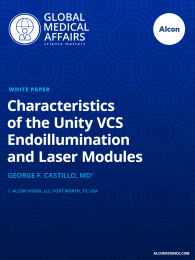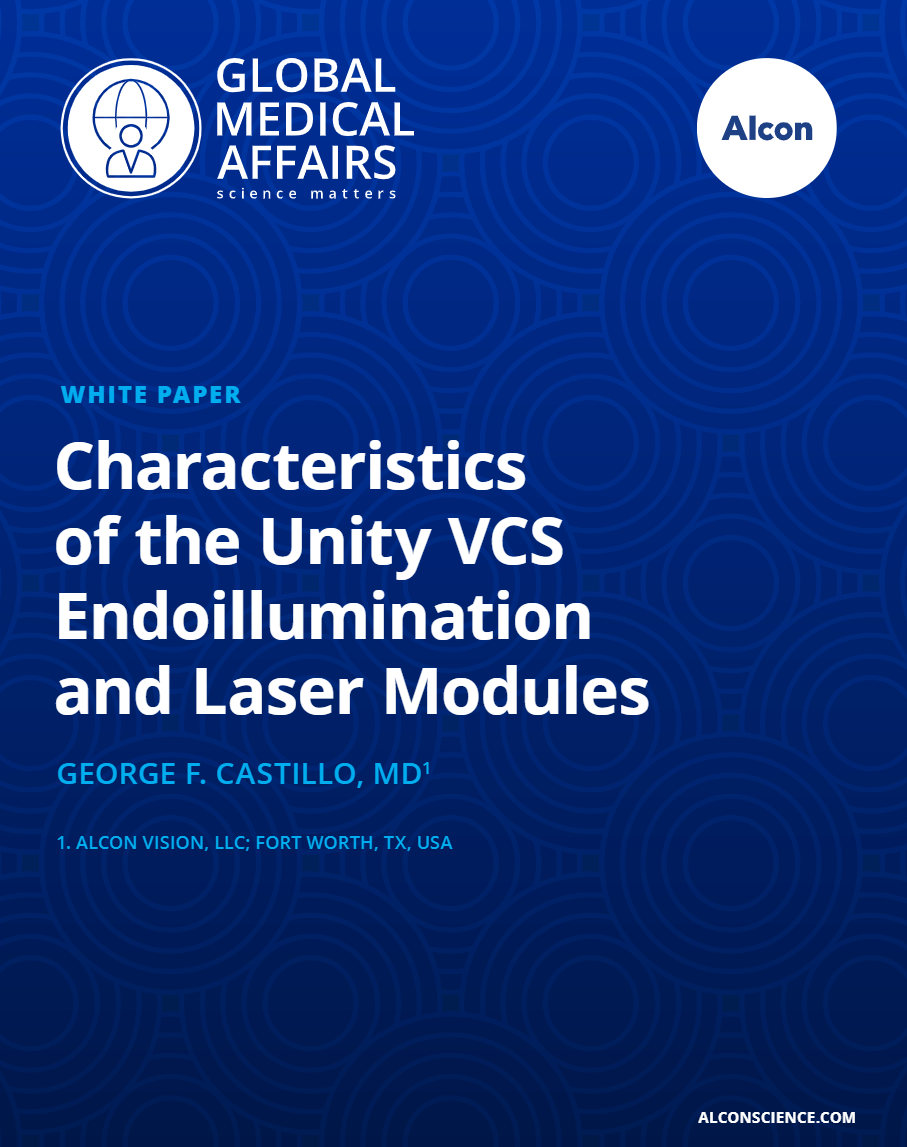

KEY TAKEAWAY POINTS
- An endoillumination light source must provide adequate and satisfactory illumination, but it must also account for the aphakic hazard experienced by the patient (light-absorbing features of the cornea and the lens are bypassed with endoillumination)
- The narrow-band qualities of an RGB LED light source provide gre ater efficiency by improving the luminous flux to radiant flux ratio, eliminating near IR and IR wavelength generation
- Four selectable pre-set lighting modes (Cool White, Warm White, Yellow and Light Sentry) as well as the ability to customize the light color for use during different surgical steps are features that enhance both the usability and safety of the light source during posterior segment surgery
- Addition of a Dynamic Stiffener to the 27G light pipe also facilitates the utility of 27G instrumentation in a broad array of vitreoretinal procedures
- The LASER modules available on Unity VCS provide an upgraded 27G IFC PurePoint LASER probe as well as a new TetraSpot LASER module that can deliver 1, 2 or 4 spots simultaneously, which may improve panretinal photocoagulation procedural times
- The LED light source of the LASER modules utilizing Light Sentry mode also contribute to the safety of intraoperative light exposure
- The endoillumination and laser features coupled with the other posterior segment features of the Unity VCS surgical platform provide the needed versatility tosafely and efficiently perform successful vitreoretinal surgery


